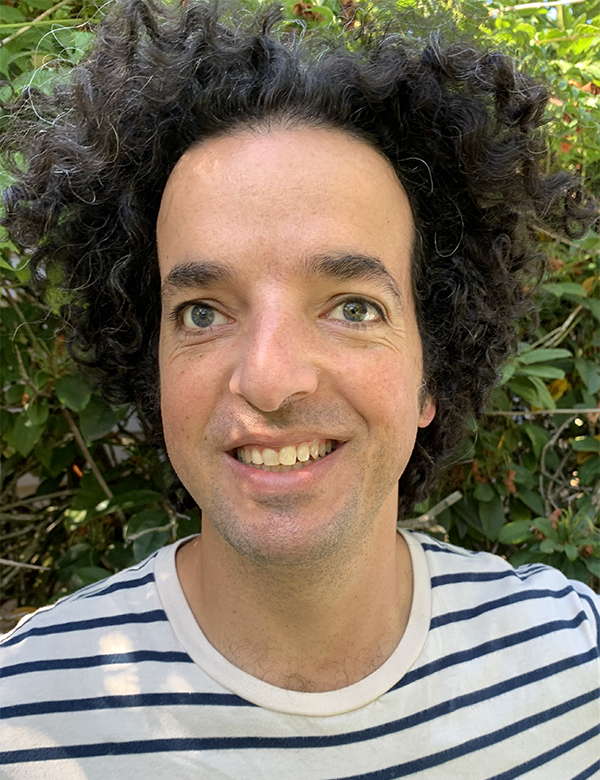Faculty Spotlight: Welcoming Ariel Rokem
 |
| Ariel Rokem |
Dr. Rokem is a Research Assistant Professor of Psychology and eScience Data Fellow. He received his B.S. in Biology and Psychology and M.A. in Psychology from The Hebrew University of Jerusalem and Ph.D. in Neuroscience from University of California, Berkeley and completed a postdoctoral in computational neuroimaging at Stanford. Prior to joining UW’s Psychology Department, Dr. Rokem was a Senior Data Scientist at the University of Washington eScience Institute. His research group looks at the biological basis of brain function using computational tools that they develop and maintain. Dr. Rokem also directs a summer school in neuroimaging and data science called NeuroHackademy that teaches students and researchers about ways that they can incorporate data science methods into their neuroscience work. It starts with lectures and hands-on tutorials on programming, version control, and other technical skills, and ends with a hackathon where participants get to put these skills to work on collaborative team projects.
Dr. Rokem traces his interest in computational approaches to understanding cognition back to reading Raymond Smullyan and Douglas Hofstadter as a child. As he progressed to graduate school he became more interested in computational methodology. During his graduate studies he began automating his own research processes, which resulted in developing open-source tools that would also allow others to automate their research, and provide a basis for shared understanding of computational methods, and for reproducible application of these methods. In 2015 Dr. Rokem joined the University of Washington eScience Institute as a data scientist.
“We are particularly interested in the biology of the long-range connections in major brain pathways, which we can measure with a method called diffusion MRI. We develop open-source software that analyzes this kind of data and that helps us extract insights into the role that these pathways play in behavior, in brain diseases, and in cognitive development and aging”
The group’s research is inherently interdisciplinary, combining Dr. Rokem’s interests in the biological foundations of behavior, together with computational techniques, developed and maintained using practical engineering approaches. Brain connections play a crucial role in neural processing. Over the last twenty years or so, we have come to accept that the nerve fibers that make up these connections are not just static wires that passively convey messages between different parts of the brain. They grow with development, and they respond to external stimuli. For example, they change when people learn new skills. Their resilience plays an important role in graceful aging. Studying and understanding these connections in human brains is, therefore, a powerful complement to other methods that we can use to understand the brain, such as functional MRI, or measurements in various animal models. Rokem’s group has also been collaborating with Jason Yeatman's group at Stanford to better understand the way in which brain connections change and evolve in childhood to enable skilled reading. This is something that can only be measured in developing human brains.
In addition, the group hopes that the insights that we will develop will lead to evaluating individual brains and provide targeted interventions to alleviate difficulties in the acquisition of skilled reading ability. Similarly, they would also like to build tools to analyze the brain of an aging individual and provide useful information about the changes that are occurring as part of the aging process, or to measure the brain of individuals with specific brain disorders and be able to pinpoint the circuits that are biologically affected in each of them.
Dr. Rokem notes, “It is a very exciting period of time to be doing work at the intersection of data science and neuroscience. We have more and more access to amazing datasets, at a scale and in volume and depth of detail that was never possible before. This is thanks to changing attitudes, where researchers have become more interested in sharing their data, and also thanks to centralized initiatives that are devoted to collecting data and making it available to the research community.”
Recent research directions have primarily been focusing on two of these datasets that have a lot of high-quality diffusion MRI measurements: the human connectome project, which was completed just a few years ago, and now provides access to a variety of data from 1,200 adult individuals. The other is the Health Brain Network dataset that includes data from children and adolescents which plans to collect and publish data from about 10,000 individuals. These two expansive datasets provide different views of brain connections such as in the developing brain in contrast with the fully developed adult brains. In parallel, the data science methodologies continue to be developed in rapid ways resulting in new ways to answer questions about systematic relationships between MRI measurements of brain connections and the variety of behavioral measurements and assessments that are part of these studies."
As many of us adapt to working from home and identifying ways to continue research and re-creating collaborative research opportunities from home, Dr. Rokem has added another challenge. He and his family welcomed a new baby to the family in 2020! We’re so grateful to have him in our department and look forward to sharing more about his group’s research findings.